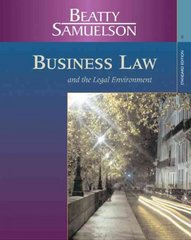e} Combine your results from o} and a) to eliminate :2: . The resulting equeeee describes the relationship bemveen toy and n5. Combine this with the condition for labour market clearing to solve for m; and 11.3. [Note You should nd to; = 8 and n3 = 16.] f} Substitute the labour inputs into the production iiunctions to get $44 and 2:3. Rernember that only relative prices matter. We have uee prices in our model ( pg, 333 and to), but only two independent price ratios. We can normalize one of the prices to whatever value we want. Isuggest you set on = 9. 3] Use suitable equations you derived before to determine on and to as functions of FA. h] The only endogenous variables we haven't determined yet are the dividends, [EA and d3. lCalctdate them i} Substitute the endogenous variables you have found into the houSel'told's budget constraint to cheek if your results are correct. The rms use different ICohoDouglas production technologies with production factors capital is and labour o. For rm a all-o is on = f1ikg,d] = git-jot} and rm B's technology is :3 = fg[kg,n3} = is; tag. The rms sell their output in the goods market at prices pp; and p3 and hire as much labour as they need in the labour market at a factor p1ioe{wage] to. The amounts of capital the rms use have already been deterrrlined by prior investment. Firms don't directly pay a factor incorue to the owners of the capital theyr use; insteil, they pay dividends to the owner of the rm {the household}, who's also the owner of all capital operated by the rm. For rm t" = A, B, these dividends d; are whatever is left of the rm*s revenue after paying labour costs, at = no: we- The houSehold has preferences over the two goods A. and B that are described by the utility motion om. $3} = sir-3:5. The household supplies o. = 24 units oflabour in total. It can spend all its labour and capital income on the two goods, plying + 11333 = m, where m = 1W1 'l' GL1 + 6:3 . The predetermined capital levels of the rms are kg = 27 and .ch = 256. The labour market clears ifA + n3 2 n. We want to solve for a number of endogenous variableS. including the prices of the two goods (333, pg]. the wage rate to, the quantities of the goods supplied Largo1 $3), the labour input of each rm { HA, 11-3} and tilt: djdd paid 10 huhld ( [Ii-A, dig}. a} For each rm i 2 21,3, nd the optimal amount of labour input are as a lnction of output 3;, the output price 1}; and the wage. h) Solve the household's optimization prohlem and nd the demand 9:,- of each good i = 31,3 as a mdion of the households available resources to. and the price of that good, 3')". c} Eliminate to from the two equations you got in part a}. Solve the reSuiting equation for \"I" Pit-Te ' 111.31. Ila-ta ' d] Eliminate m om the two equations you got in part h}. Solve the resulting equation for








